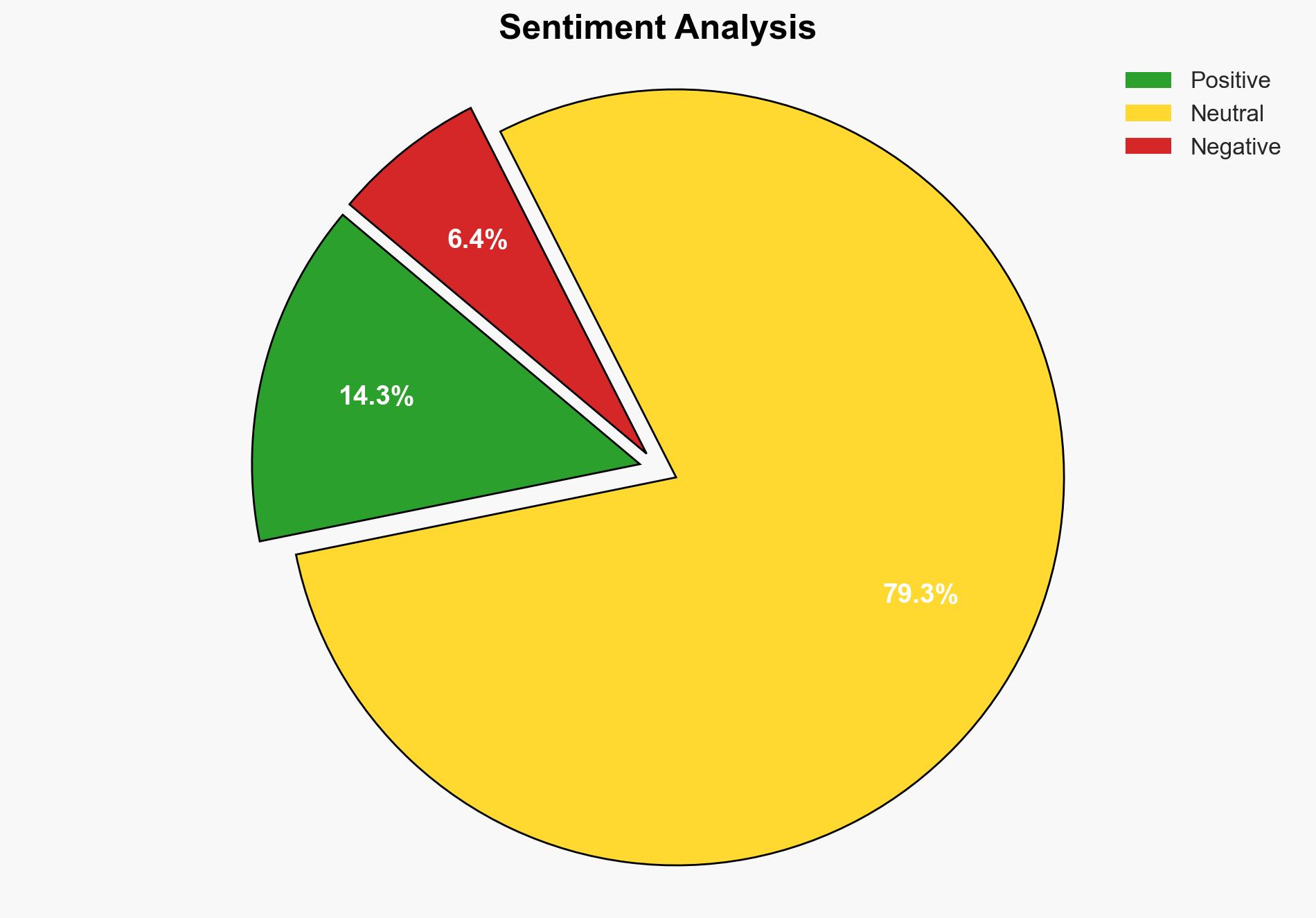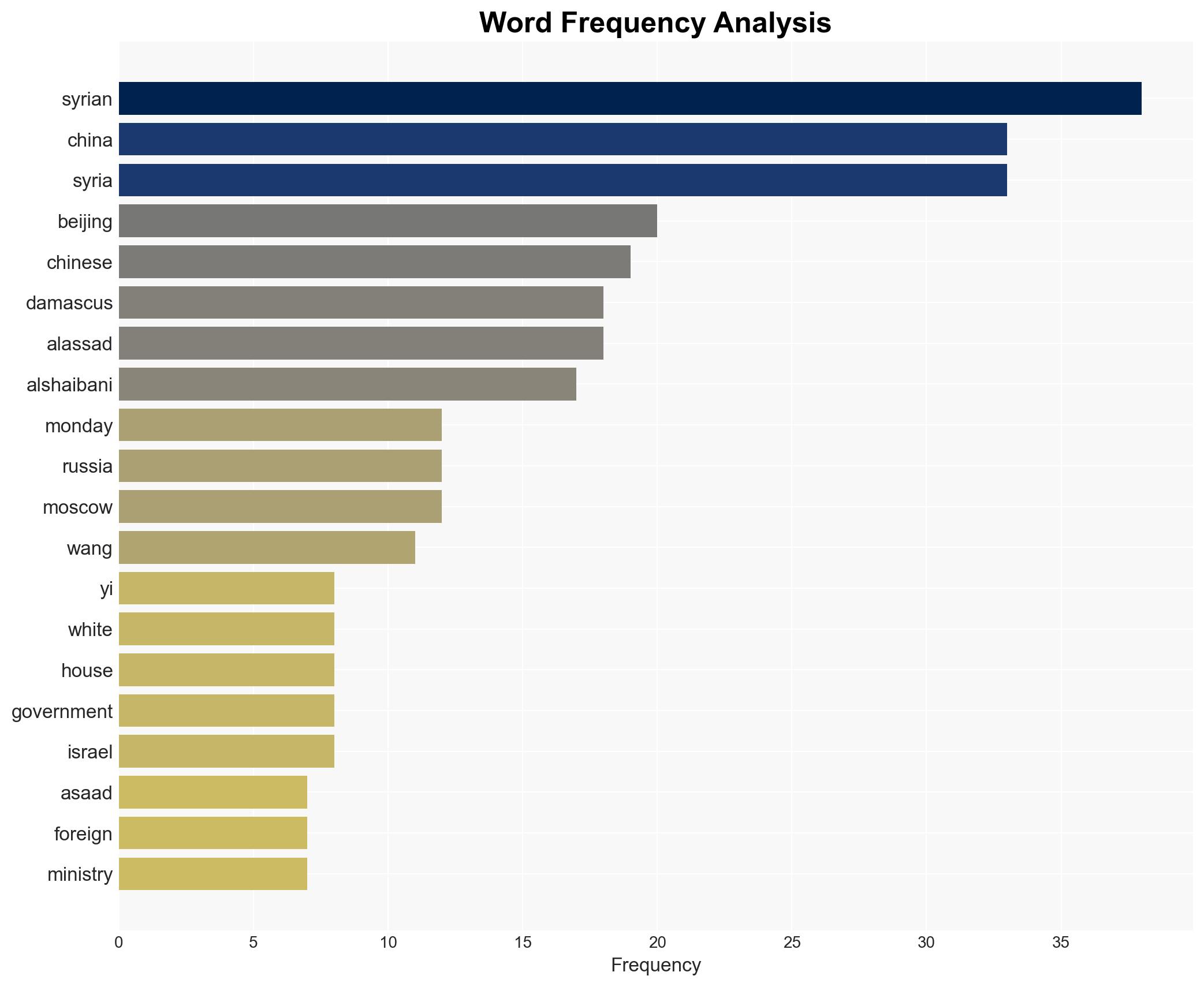Syrian FM visits China pledges counterterrorism cooperation – Al Jazeera English
Published on: 2025-11-17
AI-powered OSINT brief from verified open sources. Automated NLP signal extraction with human verification. See our Methodology and Why WorldWideWatchers.
Intelligence Report:
1. BLUF (Bottom Line Up Front)
The strategic judgment is that Syria’s engagement with China is primarily aimed at securing economic and diplomatic support to stabilize its post-conflict environment and counterbalance Western influence. The most supported hypothesis is that Syria seeks to leverage China’s economic power and political clout to rebuild its infrastructure and gain international legitimacy. Confidence level: Moderate, given the complexity of international relations and the opacity of Syrian-Chinese negotiations.
2. Competing Hypotheses
Hypothesis 1: Syria is primarily seeking economic and diplomatic support from China to aid in its reconstruction efforts and to gain international legitimacy.
Hypothesis 2: Syria is using the counterterrorism cooperation pledge as a strategic maneuver to align more closely with China, potentially at the expense of its traditional alliances with Russia and Iran.
Hypothesis 1 is more likely due to the immediate need for economic recovery and the benefits of Chinese investment and diplomatic backing. Hypothesis 2 is less likely but cannot be discounted, as it reflects Syria’s potential strategic realignment in a shifting geopolitical landscape.
3. Key Assumptions and Red Flags
Assumptions: Syria’s government is stable enough to engage in meaningful international diplomacy. China is willing to invest in Syria despite potential geopolitical risks.
Red Flags: The lack of transparency in the agreements and the potential for Syria to overpromise on counterterrorism cooperation without the capacity to deliver.
Deception Indicators: Public statements may exaggerate the level of cooperation to project strength and stability domestically and internationally.
4. Implications and Strategic Risks
The engagement between Syria and China could shift regional power dynamics, potentially reducing Western influence in the Middle East. There is a risk of escalating tensions with traditional Syrian allies if they perceive a shift towards China. Economically, increased Chinese involvement could lead to dependency, while politically, it may embolden Syria to resist Western pressures.
5. Recommendations and Outlook
- Monitor developments in Syrian-Chinese relations for shifts in regional alliances.
- Encourage diplomatic engagement with Syria to balance Chinese influence and promote stability.
- Best-case scenario: Syria successfully integrates Chinese investment to stabilize and rebuild, leading to regional stability.
- Worst-case scenario: Increased Chinese influence leads to geopolitical tensions and destabilization.
- Most-likely scenario: Gradual increase in Chinese involvement with limited immediate geopolitical shifts.
6. Key Individuals and Entities
Asaad Al-Shaibani, Wang Yi, Bashar al-Assad.
7. Thematic Tags
Regional Focus, Regional Focus: Middle East, China, Syria, International Relations, Counterterrorism, Economic Development
Structured Analytic Techniques Applied
- Causal Layered Analysis (CLA): Analyze events across surface happenings, systems, worldviews, and myths.
- Cross-Impact Simulation: Model ripple effects across neighboring states, conflicts, or economic dependencies.
- Scenario Generation: Explore divergent futures under varying assumptions to identify plausible paths.
Explore more:
Regional Focus Briefs ·
Daily Summary ·
Support us
·





